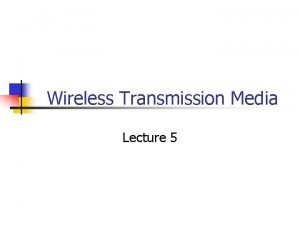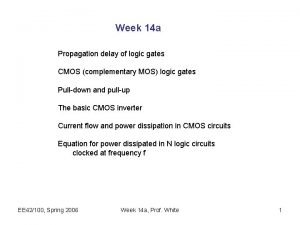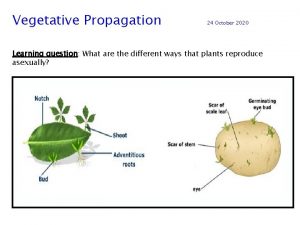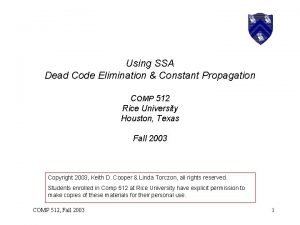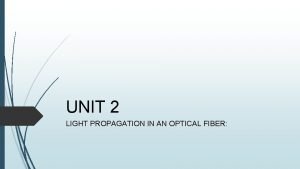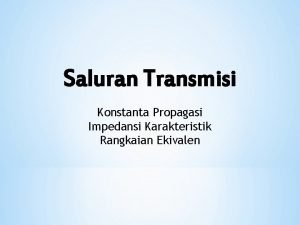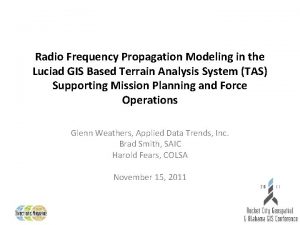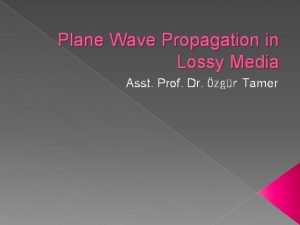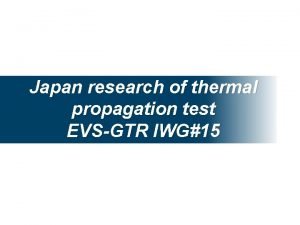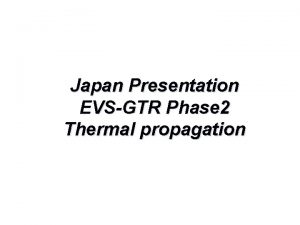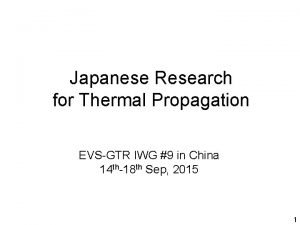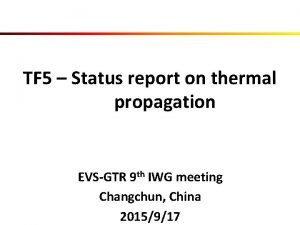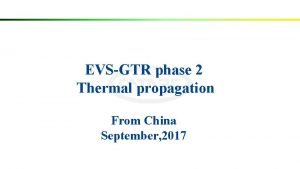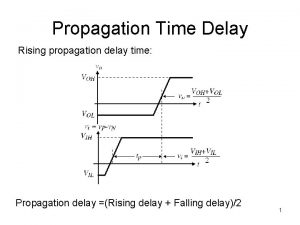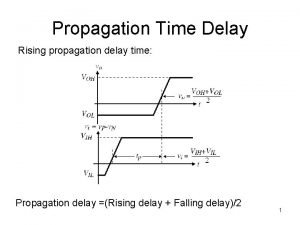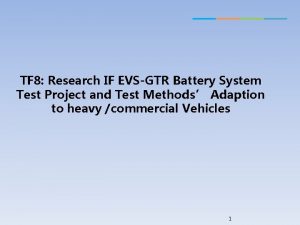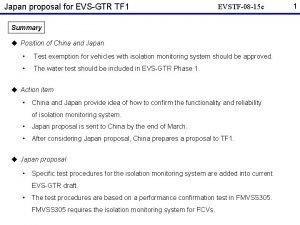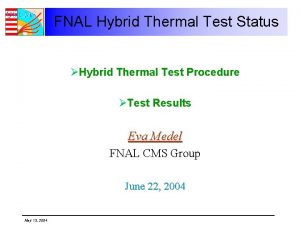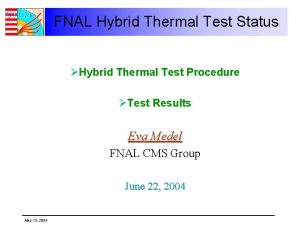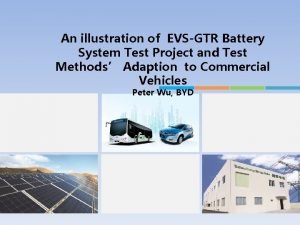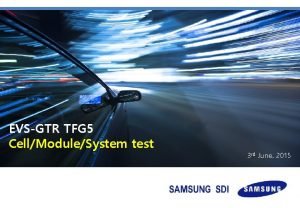Japan research of thermal propagation test EVSGTR IWG16
















- Slides: 16

Japan research of thermal propagation test EVS-GTR IWG#16

Reminder of Japan research n To assess repeatability, reproducibility, practicability, etc. of the test procedure discussed during Phase 1, different organizations inside Japan conducted thermal propagation test under same conditions according to para 23 of GTR No. 20 Part I (Though the test procedure does not represent the scenario intended in Japan). GTR No. 20 Part I Institutes A B Sample X ← Nail ← 1 3 Initiation method Institute A Institute B Number Assess reproducibility Assess repeatability EVS-GTR IWG#16 JAPAN research

Reminder of Japan research results n Some parameters have repeatability/reproducibility but some parameters doesn’t have. Sample 1 Institute A 2 3 4 Repeatability/ Reproducibility B Thermal runaway occurs/ not occurs Occurred ← ← ← High Thermal propagation occurs/ not occurs Not occurred ← ← ← High Fire and explosion occurs/ not occurs Not occurred ← ← ← High Voltage drop of initiation cell Temperature of Initiation cell and adjacent cell Pressure of pack Sample 1 JPN presentation in IWG#15 P 9, 10, 11 Variations were observed. JPN presentation in IWG#15 P 12 Sample 2 EVS-GTR IWG#16 JAPAN research

Japan new research n To assess the test procedure of heater, an organization inside Japan conducted thermal propagation test under same conditions according to para 23 of GTR No. 20 Part I. Assess Institutes C repeatability Sample Y Initiation method Heater Number Sample 2 1 2 Thermal runaway of initiation cell occurs /not occurs Thermal propagation occurs / not occurs GTR No. 20 Part I Fire and explosion occurs / not occurs Voltage drop Institute C Temperature rise Pressure of pack : EVS-GTR IWG#16 JAPAN research

Conditions Condition Reference (GTR No. 20 Part I) Reason Shape Planate or rod Same as GTR No. 20 Part I condition. Heating area 25× 25 mm Less than cell surface ↑ Power Maximum ↑ Stop temp. 400ºC [300ºC] Position Directly contacting cell surface ← Same as GTR No. 20 Part I condition. SOC 100% 90/95% or more ↑ Temperature Depends on test place 25± 2ºC Institute C doesn’t have air conditioner in test booth. Position of target cell Cell that is surrounded by other cells ← Same as GTR No. 20 Part I condition. (Page 6) Manipulation of pack Without coolant - Heat er Voltage and thermocouple points Target cell, surrounding cells and various points inside pack Because of heater spec Difficult to conduct test with coolant (Page 7) To detect thermal runaway of trigger cell and surrounding cells. EVS-GTR IWG#16 JAPAN research

Conditions Position of target cell n Target cell: Cell 15 in module 2. n Set heater in the center of cell 15 4 3 2 Target cell (Cell 15 in Module 2) Module 2 2 parallels 16 series Plastic Insulator Plate Cell 1 2 5 Cooling Plate Parallel 11 12 13 14 15 16 17 18 ‥‥ 31 32 ‥‥ 6 Module 1 Module 2 Cell Series Heater EVS-GTR IWG#16 JAPAN research

Conditions Manipulation of pack n Without coolant. Difficult to assemble cooling piping due to heater and thermal insulator. Critical issue as a regulatory test. Coolant Cooling plate Cell Packing Set insulator and heater Plastic plate Insulator Heater Cannot assemble Coolant EVS-GTR IWG#16 JAPAN research

Research results n The results of two tests show good repeatability in overall phenomena while slight variations in detailed measurements. Sample 1 2 Institute C Thermal runaway occurs/ not occurs Occurred ← Thermal propagation occurs/ not occurs Occurred ← Fire and explosion occurs/ not occurs (Only within module 2) Not occurred Voltage drop P 11 Pressure of pack Measured High ← P 9, 10 Temperature inside pack Repeatability Cannot measured Variations were observed Cannot confirmed Sample 2 EVS-GTR IWG#16 JAPAN research

Results (Voltage near initiation cell) n Slight variations in voltage drop profile and timing (i. e. thermal propagation speed) were observed. Module 2 15, 16 13, 14 17, 18 11, 12 19, 20 Sample 2 15, 16 Voltage drop start point of initiation cell 13, 14 17, 18 Time / min 11, 12 Voltage (Sample 2) / V Voltage (Sample 1) / V Sample 1 Initiation cell 11 12 13 14 1516 17 181920 19, 20 These data were acquired under the Project for the Lithium-ion Battery Advanced Technology Development, entrusted by the New Energy and Industrial Technology Development Organization (NEDO). EVS-GTR IWG#16 JAPAN research

Results (Voltage far from initiation cell) n Slight variations in voltage drop timing (i. e. thermal propagation speed) were observed. 21 -32 Module 2 21, 22 9, 10 25, 26 7, 8 Voltage (Sample 1) / V Sample 1 23, 24 27, 28 5, 6 29, 30 3, 4 31, 32 1, 2 21 -32 Sample 2 21, 22 1 -10 23, 24 9, 10 25, 26 7, 8 1 2 9 10 ・・ ・・ 2122 ・・ 3132 ・・ 27, 28 5, 6 29, 30 3, 4 1, 2 Voltage drop start point of initiation cell Voltage (Sample 2) / V 1 -10 Initiation cell 31, 32 These data were acquired under the Project for the Lithium-ion Battery Advanced Technology Development, entrusted by the New Energy and Industrial Technology Development Organization (NEDO). Time / min EVS-GTR IWG#16 JAPAN research

Results (Module 2 temperature) n Variations in maximum temperature and profile were observed in each sample. Module 2 Cell 1 2 7 8 ‥ 13 14 ‥ 15 16 17 18 27 28 ‥ 31 32 ‥ These data were acquired under the Project for the Lithium-ion Battery Advanced Technology Development, entrusted by the New Energy and Industrial Technology Development Organization (NEDO). Temperature (Sample 2) / ℃ Temperature (Sample 1) / ℃ Sample 1 Sample 2 Voltage drop start point of initiation cell Time / min EVS-GTR IWG#16 JAPAN research

Difference of module 2 temperature n Inside materials (electrode, foil, etc. ) of several cells were released in sample 1. →Couldn’t measure hot point or thermocouples might have been peeled off. Sample 1 Sample 2 Module 2 Most of the materials inside cells were released EVS-GTR IWG#16 JAPAN research

Summary n Assessed repeatability and practicability of thermal propagation test (Heater). n Good repeatability in overall phenomena while slight variations in detailed measurements. n Need to discuss acceptable level of variation and manipulation. EVS-GTR IWG#16 JAPAN research

Future Plan n Further investigation to know what scene should be simulated in this test. n Assess new initiation methods whether it can simulate this scene. 2017 #14 #15 2018 #16 2019 2020 #17 IWG Report Repeatability and reproducibility test (Nail) Japan Research Repeatability test (Heater) Field data investigation New initiation method test (Laser) EVS-GTR IWG#16 JAPAN research

Thank you for your attention

Q&A Slide No. Questions JRC 5 10 Answers Based on which rationale did you define the size of the heater? We selected heater according to GTR No. 20 Part l condition. “Heating area of heater contacting the cell shall not be larger than area of cell surface wherever possible. ” What does slight variation in thermal propagation speed mean? Can you please quantify? It means the difference of voltage drop timing between sample 1 and 2. When thermal runaway occurs, the cell voltage drops. Difference of voltage drop timing is almost same as the difference of thermal propagation speed. EVS-GTR IWG#16 JAPAN research
 Thermal energy section 3
Thermal energy section 3 Thermal transfer vs direct thermal printing
Thermal transfer vs direct thermal printing The influence of neighboring cultures on japan test
The influence of neighboring cultures on japan test Example
Example Wireless transmission media examples
Wireless transmission media examples How to calculate propagation delay in logic gates
How to calculate propagation delay in logic gates Vegetative propagation examples
Vegetative propagation examples Sparse conditional constant propagation
Sparse conditional constant propagation Optical fiber light propagation
Optical fiber light propagation Propagation of error in division
Propagation of error in division Error propagation for multiplication
Error propagation for multiplication Sparse conditional constant propagation
Sparse conditional constant propagation Rumus impedansi karakteristik
Rumus impedansi karakteristik Rf propagation modeling software
Rf propagation modeling software Lossy medium means
Lossy medium means Radical substitution mechanism
Radical substitution mechanism Br2aq
Br2aq




